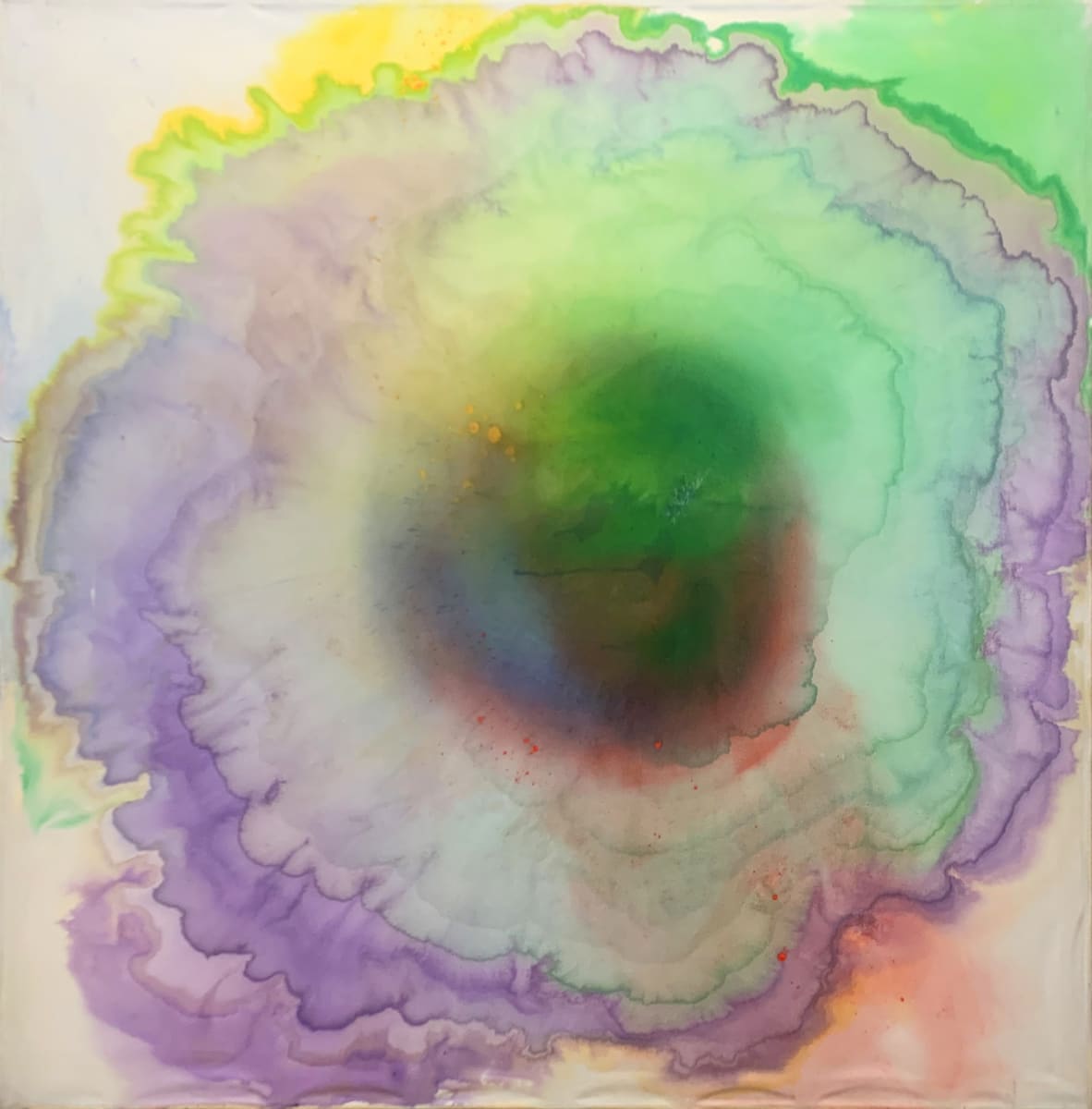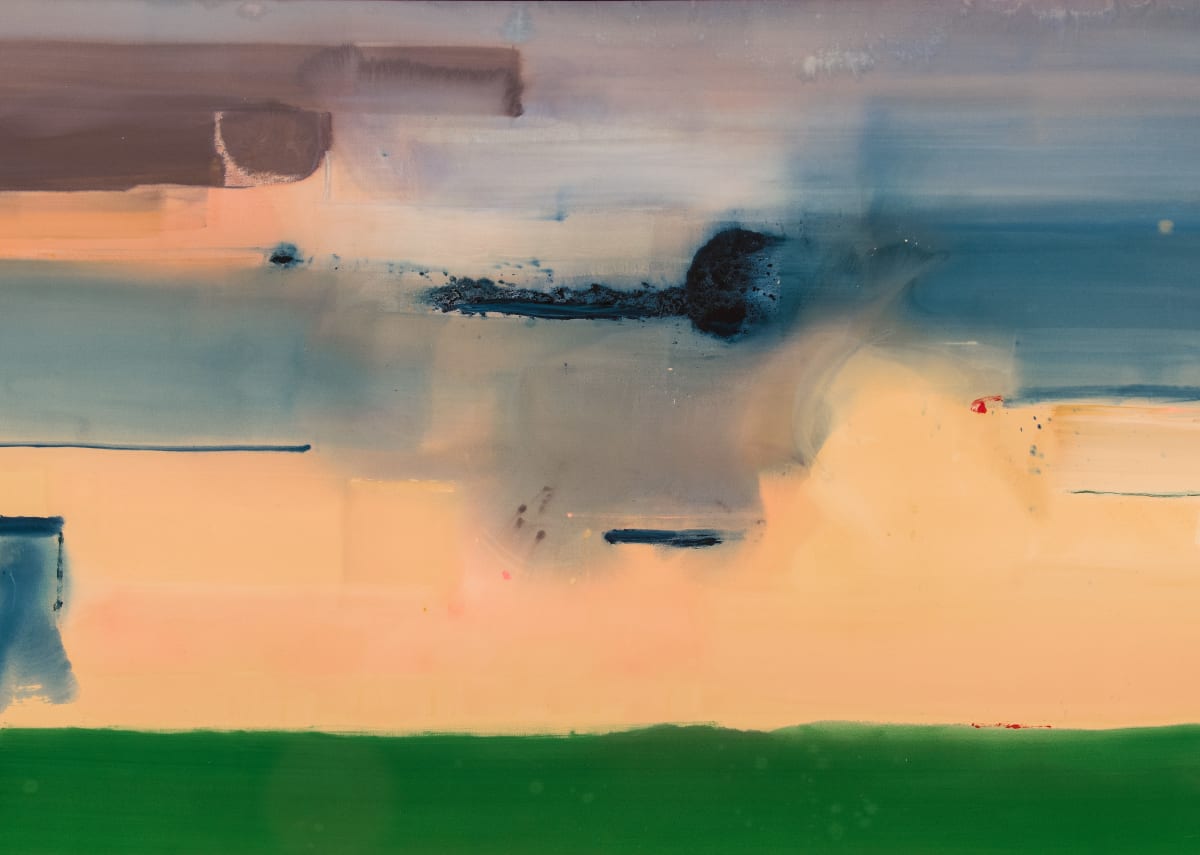
Springford is acclaimed for calligraphic gesture paintings as well colorful stain paintings featuring glowing, organic orbs in sensual pastel hues.
A contributor to Abstract Expressionism and Color Field painting, Vivian Springford is acclaimed for calligraphic gesture paintings as well colorful stain paintings featuring glowing, organic orbs in sensual pastel hues. Born in Milwaukee, Wisconsin, Springford began her artistic career as a portraitist and a commercial illustrator during the 1930s and 1940s while studying at the Art Students League. In the 1950s, she was drawn into New York Abstract Expressionist circles, developing friendships with art critic Harold Rosenberg and artists Pierre Alechinsky, Karel Appel and Sam Francis. She was deeply influenced by her relationship with Walasse Ting, with whom she shared a studio from 1958 until the mid 1960s. A Chinese-American artist, Ting introduced Springford to Taoism, Confucianism, and calligraphy.
A contributor to Abstract Expressionism and Color Field painting, Vivian Springford is acclaimed for calligraphic gesture paintings as well colorful stain paintings featuring glowing, organic orbs in sensual pastel hues. Born in Milwaukee, Wisconsin, Springford began her artistic career as a portraitist and a commercial illustrator during the 1930s and 1940s while studying at the Art Students League. In the 1950s, she was drawn into New York Abstract Expressionist circles, developing friendships with art critic Harold Rosenberg and artists Pierre Alechinsky, Karel Appel and Sam Francis. She was deeply influenced by her relationship with Walasse Ting, with whom she shared a studio from 1958 until the mid 1960s. A Chinese-American artist, Ting introduced Springford to Taoism, Confucianism, and calligraphy.
Springford’s first solo exhibition at Great Jones Gallery, which was arranged with the assistance of Harold Rosenberg, open in 1960 to substantial acclaim. This included a favorable review in "Arts Magazine" as well as the exhibition being featured in William Kronick’s 1961 film "A Bowl of Cherries." When the calligraphic paintings were shown again in 2003, Grace Glueck wrote of Springford: “Her strong sense of color is tempered by an Asian feeling for delicate, calligraphic line, seen in works of the 1960's. These exuberant linear scribblings and doodlings, stained and painted on paper or canvas, are enhanced and sometimes almost overcome by areas of black paint, worked onto the surface by stain, brushing or other means.” (1)
In the 1970s Springford moved away from calligraphy in favor of sheer, fluid washes of paint on a lightly primed canvas. As in the work of Kenneth Noland, Morris Louis and the other stain painters, who often used no primer, the acrylic saturates the canvas. In Springford’s works, the layers of color radiate out from the center forming halo-like circles. Utilizing entrancing natural colors such as floral pink, tangerine orange, lavender, and mint green, the abstractions are rich with organic references. Art critic Barbara MacAdams noted in a review for the Brooklyn Rail, “We are drawn into circular dark voids—evoking sexual orifices, pockets of the cosmos, the eye of a hurricane, and the caverns of dream and memory in the mind.” (2) The correspondence between abstract forms and the body evokes the flower paintings of Georgia O’Keeffe. Roberta Smith noted the connection with O’Keeffe in a 2018 article, in which she admired Springford’s “concentric poolings of translucent colors that intimate flowers, clouds and water reflections” and “build on the potential of Georgia O’Keeffe’s early watercolors.” (3)
Throughout the 1970s, Springford traveled frequently, making trips to Asia, Africa, Europe, South America, and the Caribbean. She returned with photographs of these varying landscapes, which informed her color choices. (4) In the 1980s she was forced to curtail her painting due to macular dystrophy and she completed her last work in 1986. Springford died in January 2003. Her work has been exhibited at the Brooklyn Museum, the Denver Art Museum, and the Museum of Fine Arts, Boston.
(1) Grace Glueck, “Vivian Springford-‘West Meets East’, New York Times, October 10, 2003.
(2) Barbara A. MacAdam, “Vivian Springford,” December-January, 2020-21.
(3) Roberta Smith, “At 7 Galleries, the Ecstatic Flow of Paint and the Stories it Can Tell,” New York Times, September 27, 2018.
(4) David Rhodes, "Vivian Springford," Brooklyn Rail, October, 2018.










![Vivian Springford, Chaos Series 17 [Untitled (VS62)], 1960](https://artlogic-res.cloudinary.com/w_800,c_limit,f_auto,fl_lossy,q_auto/artlogicstorage/htg1979/images/view/6529be8fee3087ad7c62323046f50299j/hollistaggart-vivian-springford-chaos-series-17-untitled-vs62-1960.jpg)




